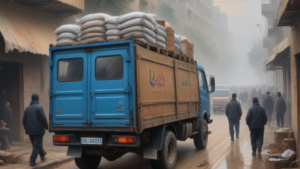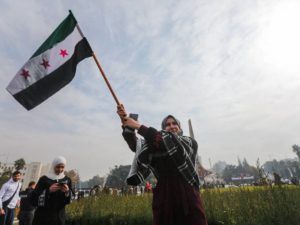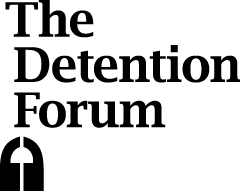On 10 April 2024, the European Parliament adopted a Pact on Migration and Asylum that incorporates a package of directives intended to update and consolidate the EU’s response to the arrival of refugees, asylum seekers and other migrants. While the Pact applies specifically to EU member states, it has some important implications for the broader campaign to Stop the Inhumanity at Europe’s Borders.

Picture: Protest against the Pact at the Rosa Luxembourg Square in Brussels. Author: @lucisnerosr / NNK.
Background to the Pact
The Pact on Migration and Asylum is essentially a belated response to the emergency of 2015-16, when EU member states were caught unprepared for the sudden arrival of a million refugees, asylum seekers and other migrants from the Middle East, South-West Asia and sub-Saharan Africa.
Although numbers have diminished substantially since that time, the EU has continued to express alarm about the scale of irregular migration from those parts of the world. And in order to address the issue, it has, after several years of intense and sometimes acrimonious negotiations, agreed on this new Pact. In the words of the European Commission, the Pact “is designed to support member states that face important migratory pressures and to protect our external borders.”
Given the length and complexity of the Pact, it is not possible to summarize all of the instruments that the EU plans to use to attain its stated objectives. For the purposes of this article, five are of particular note.
First, a Screening Regulation that determines the procedure to be applied to non-EU nationals who arrive irregularly in the Union. Second, an Asylum Procedures Regulation, governing the treatment of people who apply for asylum in the EU. Third, an Asylum and Migration Management Regulation that sets out what are described as “solidarity measures”, intended to promote mutual support between EU member states.
A fourth instrument included in the Pact is a Crisis and Force Majeure Regulation which determines what should be done if there is a migration or refugee emergency at the external border of the EU. Finally, the EU’s new approach incorporates a Resettlement Framework which provides, in principle, a means for non-EU nationals to be admitted to the Union in a safe, legal and predictable manner.
Assessments of the Pact
Unsurprisingly, the European Commission has hailed the Pact as a great advance, suggesting that it constitutes “a fairer, more efficient and more sustainable framework to manage migration.” UNHCR and IOM have also welcomed the Pact’s recent adoption, with High Commissioner for Refugees Filippo Grandi stating that it represents a “positive step” and pledging his organization’s “advice and support” in its implementation.
In stark contrast, NGOs and civil society organizations have been far more wary of the Pact. Human Rights Watch, for example, calls it “a disaster for asylum seekers and migrants,” while Amnesty International says that the Pact “will set European asylum law back for decades to come and lead to greater human suffering.”
Drawing on an analytical framework developed by the International Rescue Committee, the following section identifies some of the principal issues that arise from the Pact and which are particularly relevant to the campaign to Stop the Inhumanity at Europe’s Borders.
Key concerns
First, there is a serious risk that the procedures introduced by the Pact will increase the extent to which refugees and other migrants are detained in prison-like facilities at the borders of Europe. New arrivals will be screened for security, health, vulnerability and protection purposes – a component of the Pact that could have positive outcomes for those people if undertaken in an effective and equitable manner.
But many questions remain to be answered about the thoroughness and accuracy of these checks, the length of time it will take to complete them, the conditions under which new arrivals will be confined, and the prospect that large-scale and long-term detention will take place in response to mass influxes.
Under the provisions of the Pact, people could be subject to detention and deportation if they originate from states that produce asylum seekers with low refugee recognition rates, or if they have previously travelled through countries that are deemed to be safe. As a result of the Pact, unsuccessful asylum seekers will also be at greater risk of protracted detention if their country of origin refuses to readmit them.
Children will be liable to detention, whether they arrive alone or as part of a family, and those claiming to be children will be subject to age assessment tests, despite their proven inaccuracy. It is not clear whether children will have adult representation during the screening procedure.
Second, the Pact provides for the establishment of an independent border monitoring mechanism, a measure that also has some positive potential for the protection of new arrivals. However, the oversight provided by that mechanism will be limited specifically to the screening procedure. Further assurances will also be needed from the EU with respect to the capacity and autonomy of the monitoring mechanism, as well as its ability to ensure that meaningful action is taken in cases of abusive behaviour by states. If such issues are not addressed, pushbacks at sea and by land of the type currently taking place at some European borders will continue unabated.
Third, as a result of the Pact, the situation of new arrivals in countries located at the external EU border may well become more difficult. Those people will be obliged to remain in the first EU country they have entered, and most commonly that will mean states on the southern and eastern fringes of the Union that lack the resources and infrastructure needed to establish decent reception facilities and provide adequate settlement opportunities. The Pact will also make it more difficult for people arriving in those states to reunite with family members who have taken up residence in other and more prosperous EU countries..
While there are provisions in the new Pact for refugees and other migrants to be dispersed more equitably among the EU’s member states, this arrangement will not be binding. Governments that do not wish to participate in the redistribution programme will be exempted from it if they are prepared to pay a financial penalty.
Finally, the EU’s Resettlement Framework promises to provide an opportunity for people who are in need of protection to be admitted to the EU by means of safe and legal routes. They would consequently be spared the need to undertake difficult, dangerous and expensive journeys to Europe, facilitated by unscrupulous human smugglers and corrupt government officials.
But will that promise be fulfilled in practice? It seems unlikely that EU resettlement places will be provided on a scale that is commensurate with the demand for them, meaning that the incentive for people to move by irregular means will persist.
This is especially the case for those who do not meet the criteria for refugee status and who would therefore be denied the option of resettlement. It remains unclear as to who would be prioritized for the limited number of refugee resettlement places available, and how many people who want to move to Europe would be able to take advantage of ‘complimentary pathways’ such as labour mobility programmes, educational scholarships and family reunion initiatives.
Most disturbingly of all, there is a very real risk that a modest increase in the scale of EU resettlement would be used as a justification for the exclusion and punishment of people who arrive in the Union in an independent and irregular manner. In this respect, refugees and other migrants who are deemed to have jumped the mythical ‘resettlement and regular migration queue’ could well find themselves subjected to even greater inhumanity than is currently the case Given the wide-ranging nature of the Pact’s provisions and the potential for disagreement among EU member states with respect to its implementation, it is not possible to predict its precise outcomes. Close scrutiny and forceful advocacy will be required in the months to come in order to limit the Pact’s adverse consequences for people arriving in Europe.
For further reading, EU documents on the Pact can be accessed at:
https://home-affairs.ec.europa.eu/policies/migration-and-asylum/pact-migration-and-asylum_en The NGO critiques of the Pact cited in this article are by Human Rights Watch, https://www.hrw.org/news/2023/12/21/eus-migration-pact-disaster-migrants-and-asylum-seeker, Amnesty International, https://www.amnesty.org/en/latest/news/2024/04/eu-migration-asylum-pact-put-people-at-risk-human-rights-violations/ and IRC, https://ww w.rescue.org/eu/article/what-eu-pact-migration-and-asylum











